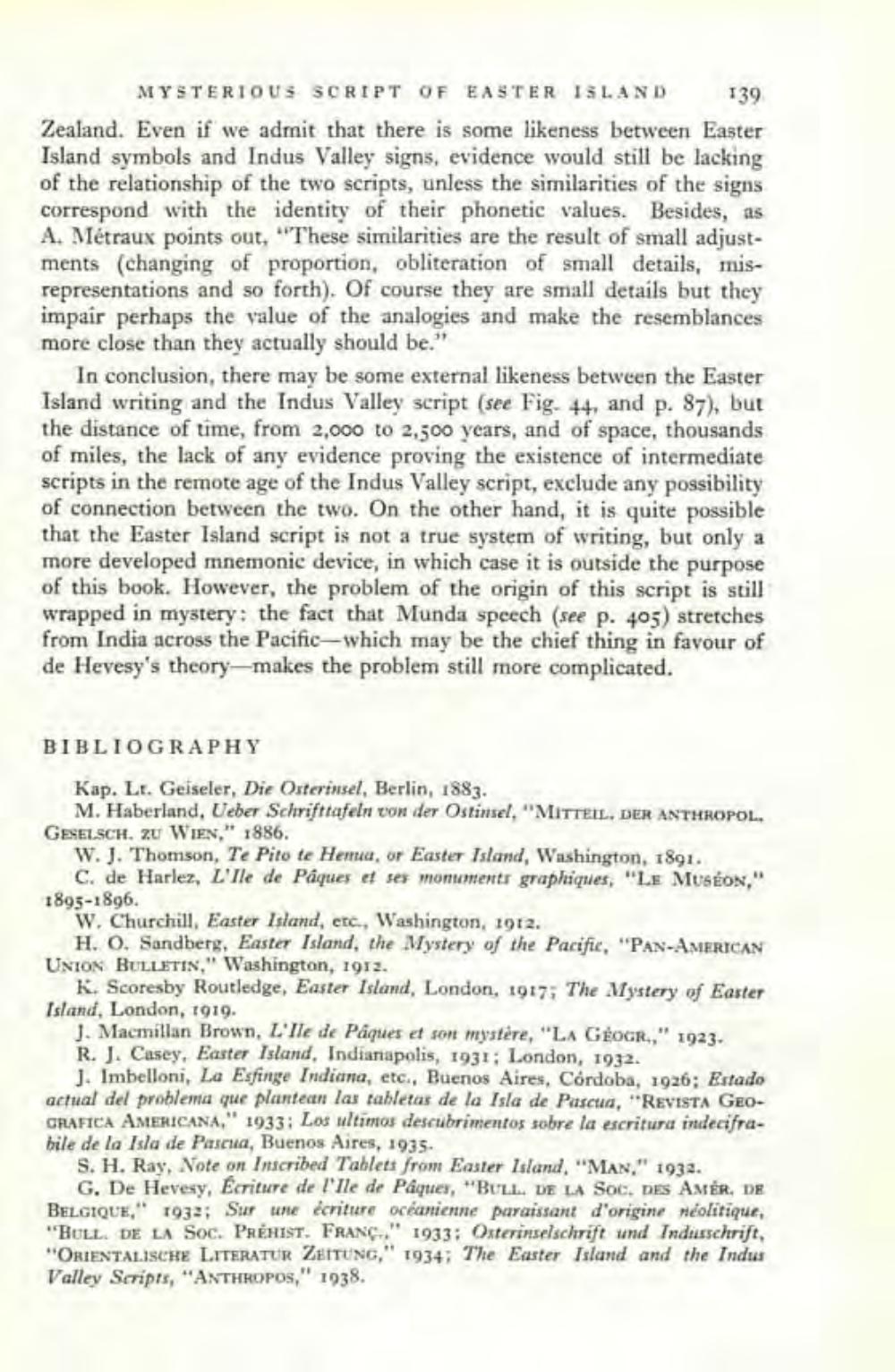________________
MYSTERIOUS SCRIPT OF EASTER ISLAND 139 Zealand. Even if we admit that there is some likeness between Easter Island symbols and Indus Valley signs, evidence would still be lacking of the relationship of the two scripts, unless the similarities of the signs correspond with the identity of their phonetic values. Besides, as A. Métraux points out, "'These similarities are the result of small adjustments (changing of proportion, obliteration of small details, misrepresentations and so forth). Of course they are small details but they impair perhaps the value of the analogies and make the resemblances more close than they actually should be."
In conclusion, there may be some external likeness between the Easter Island writing and the Indus Valley script (see Fig. 44, and p. 87), but the distance of time, from 2,000 to 2,500 years, and of space, thousands of miles, the lack of any evidence proving the existence of intermediate scripts in the remote age of the Indus Valley script, exclude any possibility of connection between the two. On the other hand, it is quite possible that the Easter Island script is not a true system of writing, but only a more developed mnemonic device, in which case it is outside the purpose of this book. However, the problem of the origin of this script is still wrapped in mystery: the fact that Munda speech (see p. 405) stretches from India across the Pacific—which may be the chief thing in favour of de Hevesy's theory-makes the problem still more complicated.
BIBLIOGRAPHY
Kap. Lr. Geiseler, Die Osterinsel, Berlin, 1883.
M. Haberland, Ueber Schrifttafeln von der Ostinsel, MITTEIL. DER ANTHROPOL. GESELSCH. ZU WIEN," 1886.
W. J. Thomson, Te Pito te Hemia, or Easter Island, Washington, 1891.
C. de Harlez, L'Ile de Pâques et ses monuments graphiques, "LE MUSÉON," 1893-1896.
W. Churchill, Easter Island, etc., Washington, 1912.
H. O. Sandberg, Easter Island, the Mystery of the Pacific, "PAN-AMERICAN UNION BULLETIN," Washington, 1912.
K. Scoresby Routledge, Easter Island, London, 1917; The Mystery of Easter Island, London, 1919.
1. Macmillan Brown, L'Ile de Pâques et sont mystère, "LA GÉOGR," 1923. R. J. Casey, Easter Island, Indianapolis, 1931; London, 1932.
J. Imbelloni, La Esfinge Indiana, etc., Buenos Aires, Córdoba, 1926; Estado actual del problema que plantean las tabletas de la Isla de Pasctus, "REVISTA GEOGRAFICA AMERICANA," 1933: Los ultimos descubrimentos sobre la escritura indecifrabile de la Isla de Pascua, Buenos Aires, 1935.
S. H. Ray, Note on Inscribed Tablets from Easter Island, "MAN," 1932.
G. De Hevesy, Ecriture de l'Ile de Pâques, "BULL DE LA SOC. DES AMÉR, DE BELGIQUE," 1932; Sur une écriture océanienne paraissant d'origine néolitique, "BULL. DE LA Soc. PRÉHIST. FRANÇ.." 1933: Osterinselschrift und Indusschrift, "ORIENTALISCHE LITERATUR ZEITUNG," 1934; The Easter Island and the Indus Valley Scripts, "ANTHROPOS, 1938.




